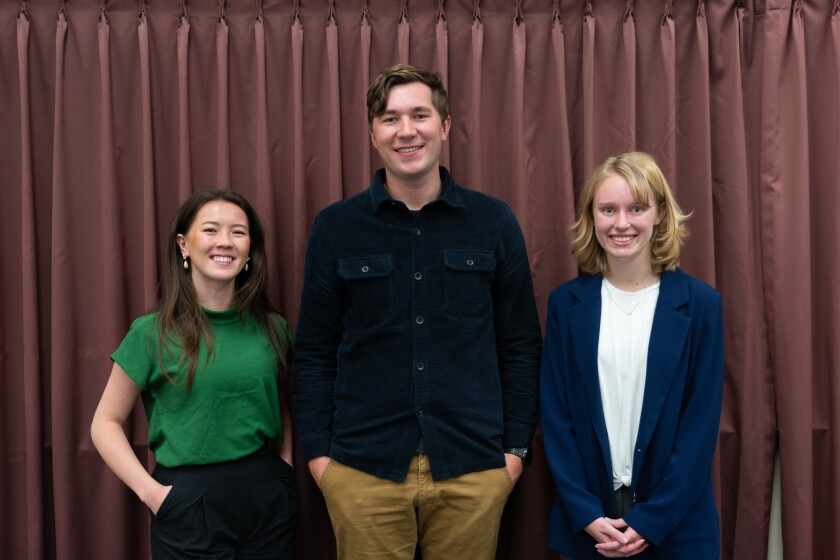What if the cure to alcohol addiction could be found in a pill? BYU students Nathan Steed (Neuroscience '23) and Aubrey Moedl (Neuroscience '23) presented their research on treating alcohol addiction at the College Undergraduate Research Awards.
Moedl and Steed are students in professor Scott Steffensen’s lab, which focuses on addiction neurobiology. On his website, Steffensen explains that he uses electrophysical, neurochemical, imaging, and behavioral approaches to study the brain’s tolerance to alcohol and nicotine as it becomes more dependent on the substances.
Moedl was part of a multifaceted study within the lab. Her group worked with patch clamp electrophysiology, or the technique used in labs to study currents in cells and tissue.
According to Moedl, catharanthine is a drug with the potential to provide an alternative addiction treatment without the negative side effects of current anti-addiction drugs. Affecting dopamine differently than other medications, catharanthine functions to dampen the effects of alcohol so the withdrawal symptoms aren’t as severe. Catharanthine isn’t approved to be used in the United States yet, but could work similarly to the concept of a nicotine patch, alleviating symptoms of craving and withdrawal.
Moedl found that catharanthine inhibits the firing rate of cholinergic interneurons, small cells which fine-tune brain function. “If there was a medication people could use [to treat alcohol addiction], I think it would decrease some of the difficulty and pain that goes along with alcohol withdrawal,” Moedl said. “[Catharanthine] can give people the boost they need to recover from their addiction.”

Steed became passionate about alcohol addiction after seeing how it hurt people on his church mission in the Caribbean. This motivated him to join Steffensen’s lab in 2020. Like Moedl, Steed’s objective was to study catharanthine as a potential pharmacological therapeutic treatment for alcohol addiction. “I was looking specifically at what receptors in the brain catharanthine is working on in the nucleus accumbens, . . . the specific part of the brain associated with behavior and addiction,” Steed said.
The study is still ongoing, but Steed was able to narrow his research down to several specific nicotine acetylcholine receptor subtypes.
Both students took home CURA awards for their research, Moedl taking second place and Steed taking first. After graduation this spring, Moedl plans on attending Thomas Jefferson University in Philadelphia to get her doctorate in health science. She wants to practice in the field and continue conducting research on addiction medicine. Steed will continue working at a migraine clinic as he starts applying to medical schools.